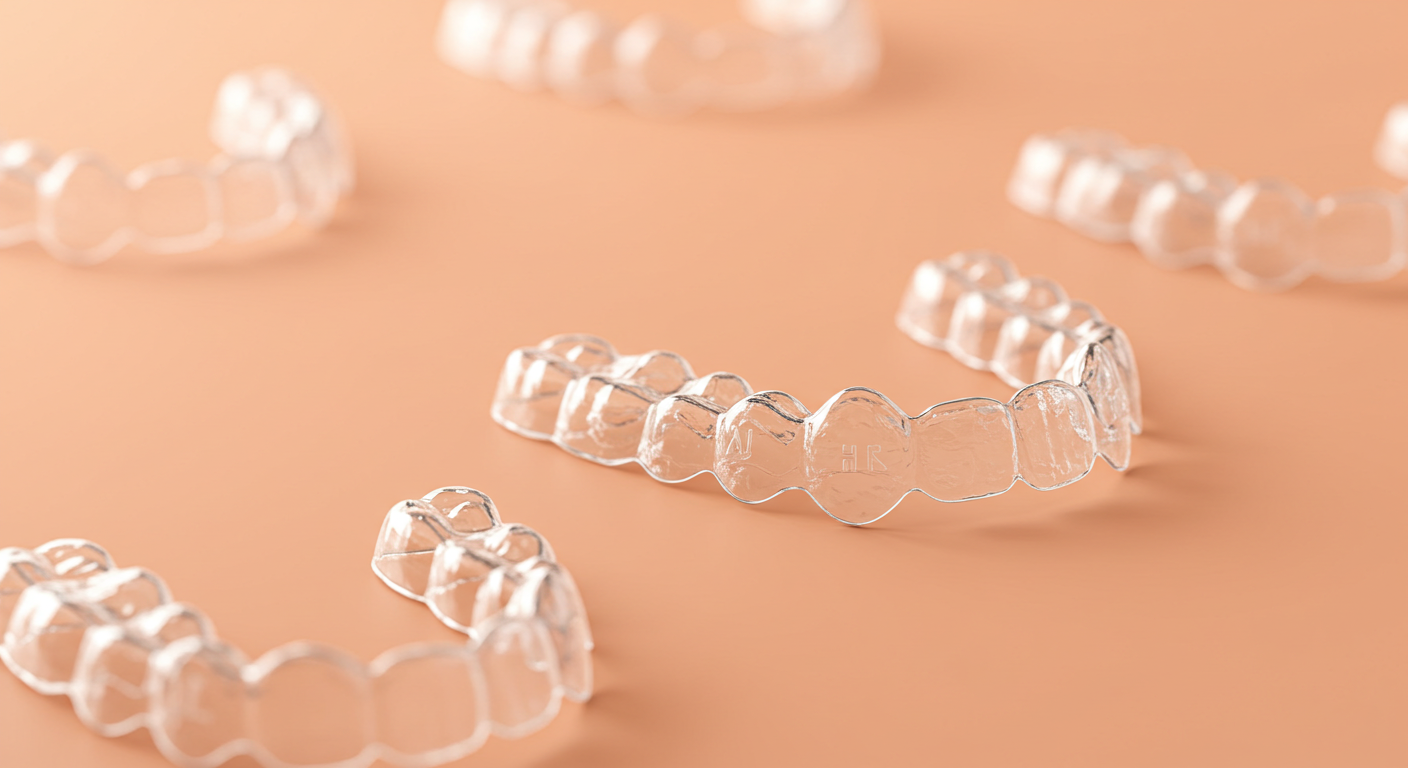Contents

The Pros and Cons of Invisalign Treatment: Everything You Need to Know
The Invisalign treatment, based on the use of clear dental aligners, has become a popular solution for correcting dental misalignments. Appreciated for its discretion and flexibility, it offers many advantages, but also some drawbacks to consider before starting. Here is a comprehensive overview in two parts: 10 pros and 10 cons.
10 Advantages of Invisalign Treatment
#1 The Discretion of the Treatment
One of the major assets of Invisalign is its near-invisibility. Made of clear polyurethane resin, the aligners blend in with the teeth with only a few discreet reflections. This design allows patients to continue their social and professional activities without feeling self-conscious.
#2 A Treatment Accessible Through Dentists and Orthodontists
Invisalign can be performed by a certified dentist or orthodontist. After a digital scan, a treatment plan called ClinCheck is designed in collaboration with an orthodontic specialist, ensuring precision and safety throughout the process.
#3 Appreciable Speed
Depending on the complexity of the case, treatment often lasts only a few months. The aligners, changed regularly, exert quick and continuous forces on the teeth, accelerating tooth movement without requiring frequent visits to the practitioner.
#4 Patient Autonomy
Invisalign offers great freedom: a series of aligners is given to the patient at the beginning of the treatment, and changes are made at home approximately every two weeks. This autonomy, however, requires strict discipline (wearing them at least 22 hours a day) and good management of the aligners.
#5 Predictable Results
Thanks to the ClinCheck simulation, the patient can visualize the expected results before even starting. This digital projection enhances confidence and allows for tracking the progress of the treatment.
#6 Precise Finishing
At the end of the treatment, additional aligners can be made to perfect the result, both aesthetically and functionally. With Invisalign Full, their number is unlimited, ensuring an optimal finish.
#7 A Solution for Complex Cases
Invisalign can be adapted to combined treatments: extractions, placement of veneers or implants, maintaining dental spaces... These specific situations are integrated into the planning, making Invisalign a versatile option.
#8 Simplified Hygiene
Unlike traditional braces, the aligners are removed for eating and brushing teeth. Maintenance with specific cleaning crystals and regular dental cleanings are sufficient to maintain good oral hygiene.
#9 Visible Progress Along the Way
The transparency of the aligners allows patients to see the evolution of their smile themselves throughout the treatment, which is often a motivating factor.
#10 A Bonus: Possible Weight Loss
By avoiding snacking and sugary drinks (aligners must be removed to eat), some patients adopt a healthier diet, which can lead to a beneficial weight loss for their health.
10 Disadvantages of Invisalign Aligners
#1 Sometimes Problematic Weight Loss
While weight loss is an advantage for some, it can be problematic for others, especially in cases of pre-existing eating disorders. Nutritional monitoring may then be necessary.
#2 Invisalign Attachments
To optimize tooth movements, small composite buttons (attachments) are fixed to the teeth. Although discreet and matched to their color, they can reflect light under certain lighting conditions, making them more visible.
#3 Interproximal Reduction (IPR)
In cases of significant crowding, a slight filing of the enamel (IPR or stripping) is sometimes required to create space. This procedure, although minimal, can be unpleasant and slightly alters the tooth surface.
#4 The Potential Need for Elastics
To correct jaw misalignments, elastics may be prescribed. Worn day and night, they are often uncomfortable to install and tolerate.
#5 A Limitation for Very Complex Cases
Major orthodontic problems, especially those requiring surgery, cannot always be treated effectively with Invisalign. Traditional braces remain essential in such cases.
#6 Demanding Compliance
The success of the treatment depends on the patient's discipline: rigorous wearing of the aligners and impeccable hygiene are essential, otherwise, the results may be compromised.
#7 Temporary Speech Impediments
At the beginning of the treatment, the aligners can interfere with the tongue and lips, causing a slight lisp. This effect usually disappears after a few days or weeks.
#8 High Cost
Often not fully covered by insurance, Invisalign represents a significant investment. Some dental plans offer partial coverage, but an out-of-pocket expense usually remains.
#9 Temporary Discomfort
Each change of aligners can cause discomfort due to the new pressures exerted on the teeth. These sensations, although temporary, can be bothersome for a few days.
#10 The Need for a Certified Provider
The treatment must be supervised by a trained and certified Invisalign provider. This requirement ensures quality but limits the choice of practitioner and can complicate access in some areas.
Conclusion
Invisalign is appealing for its discretion, flexibility, and predictable results, but it requires a serious commitment from the patient and can have constraints, both financially and practically. Before you start, a consultation with a certified provider is essential to assess whether this treatment is right for your needs and lifestyle. Weighing these pros and cons will help you make an informed decision for a smile that suits you!
